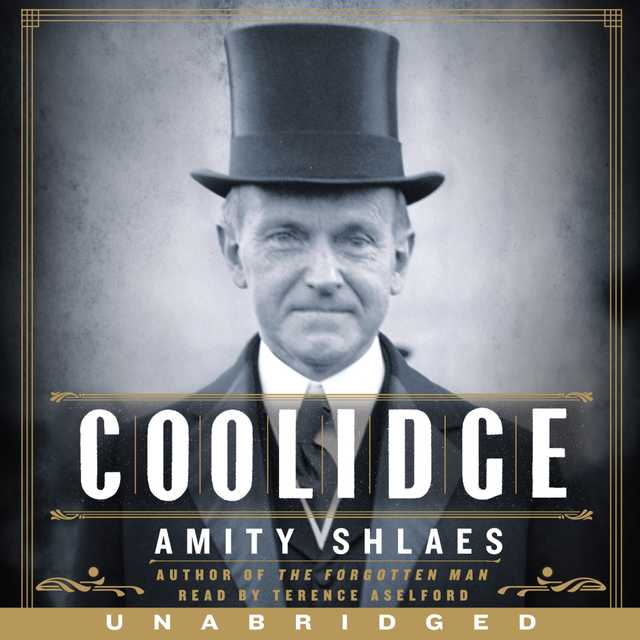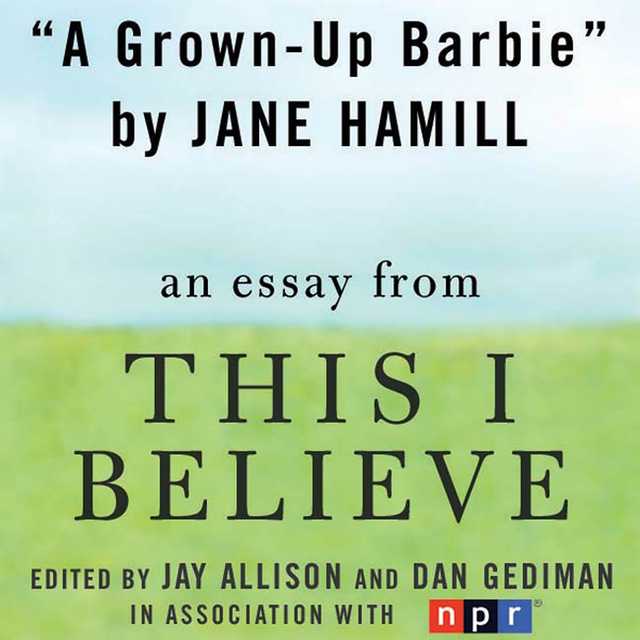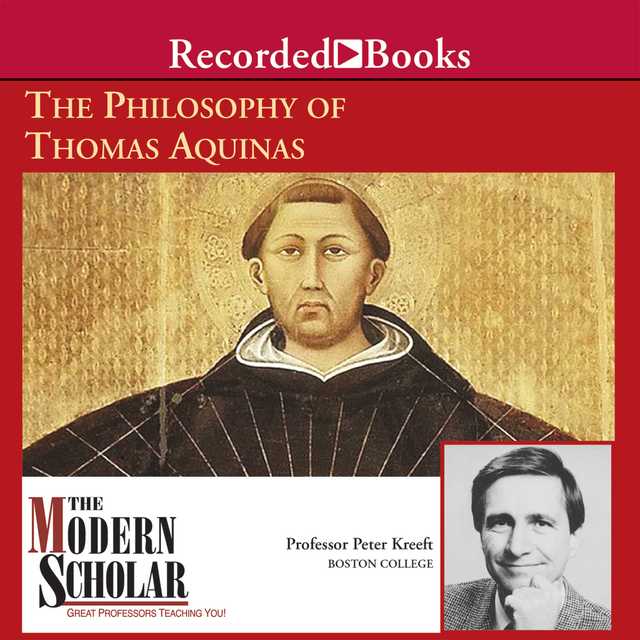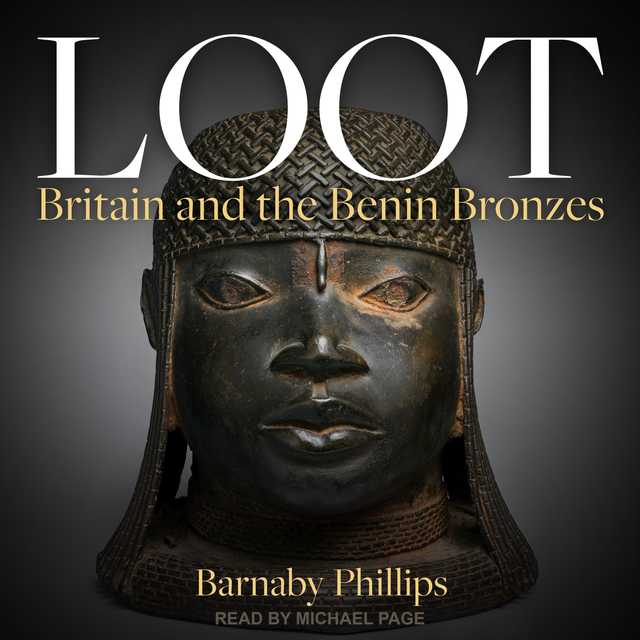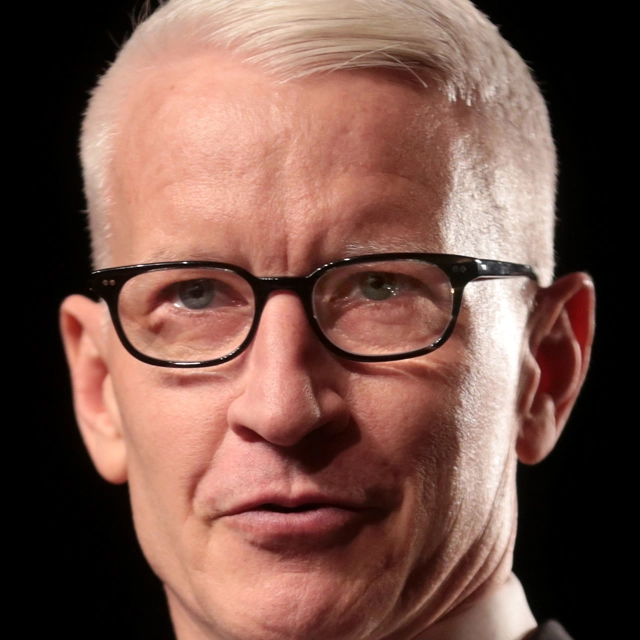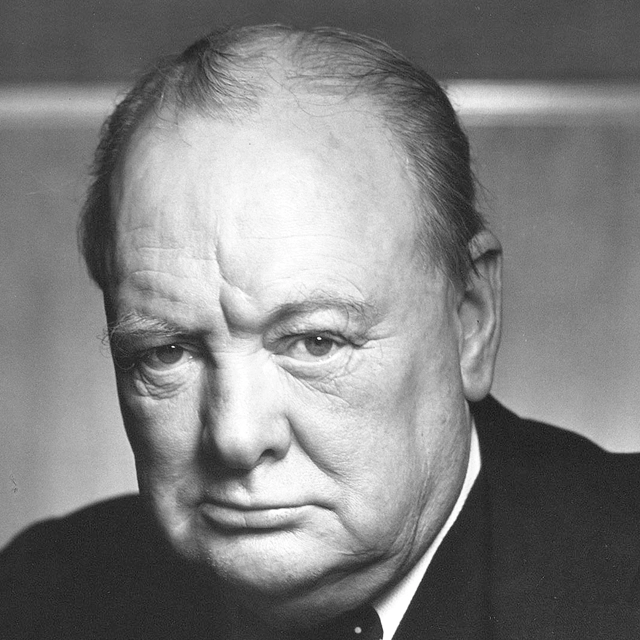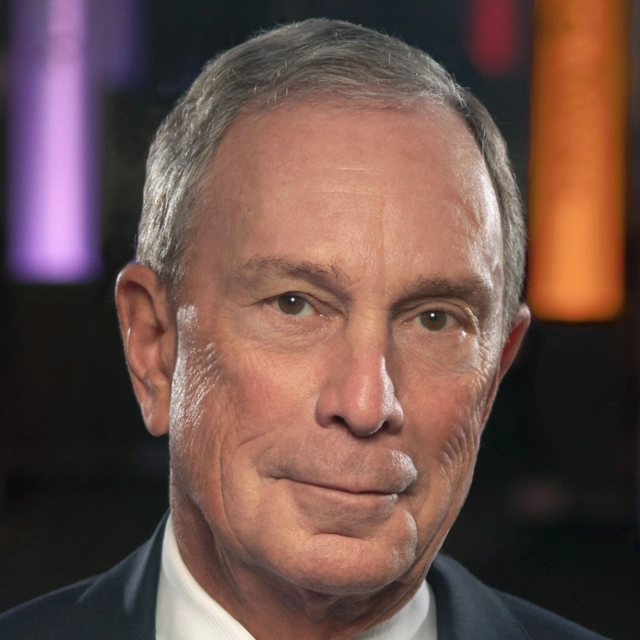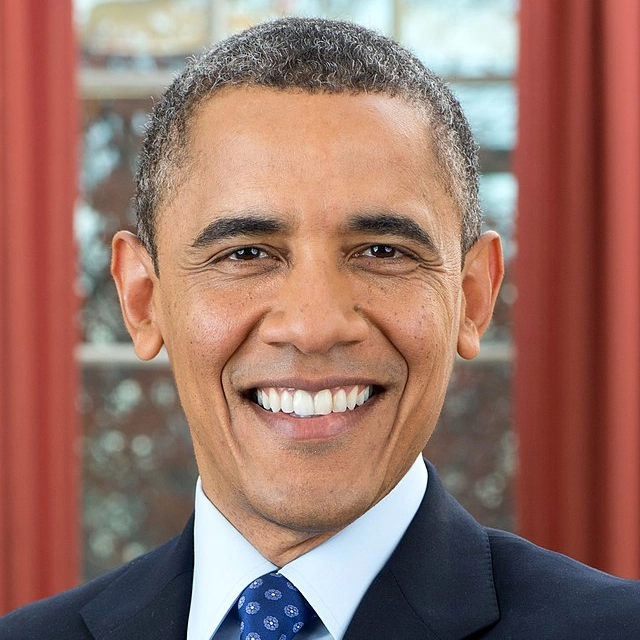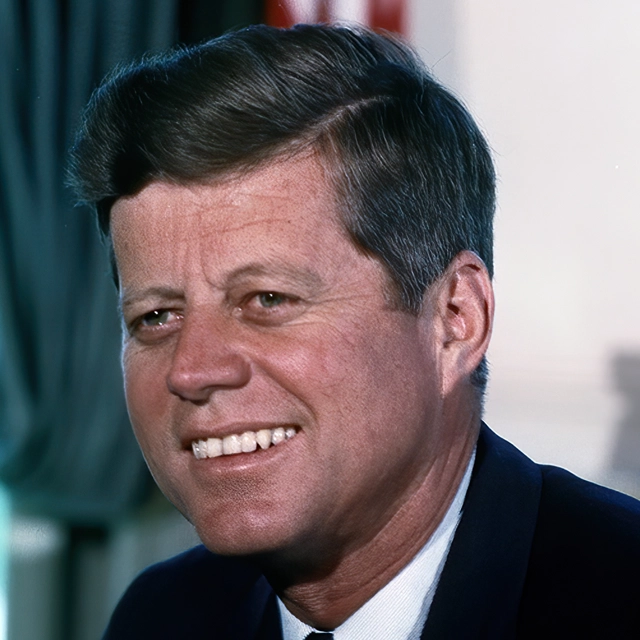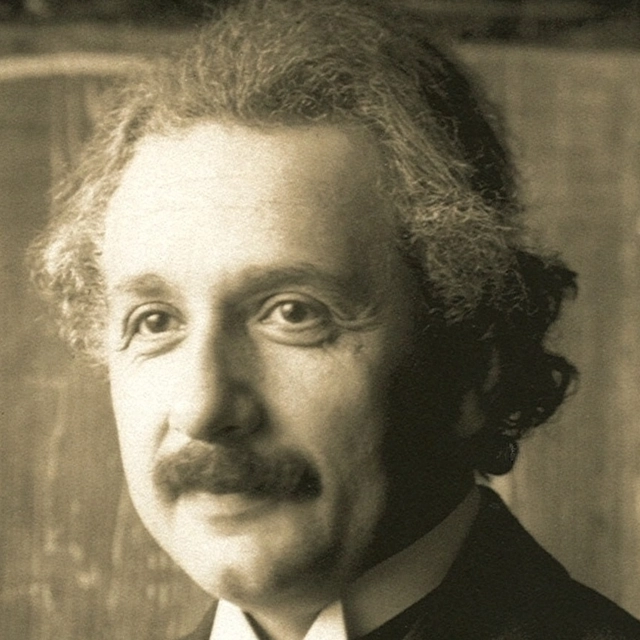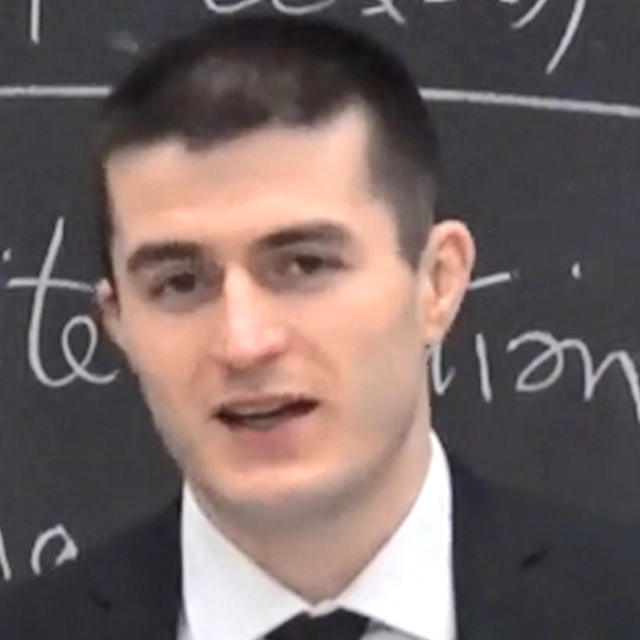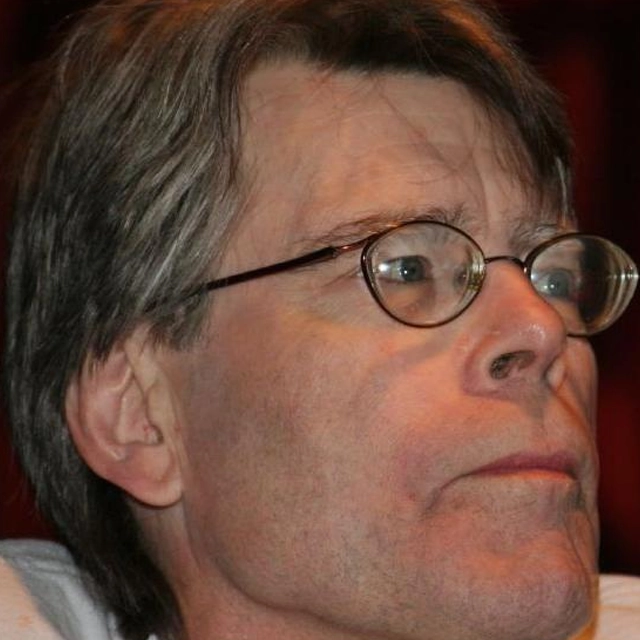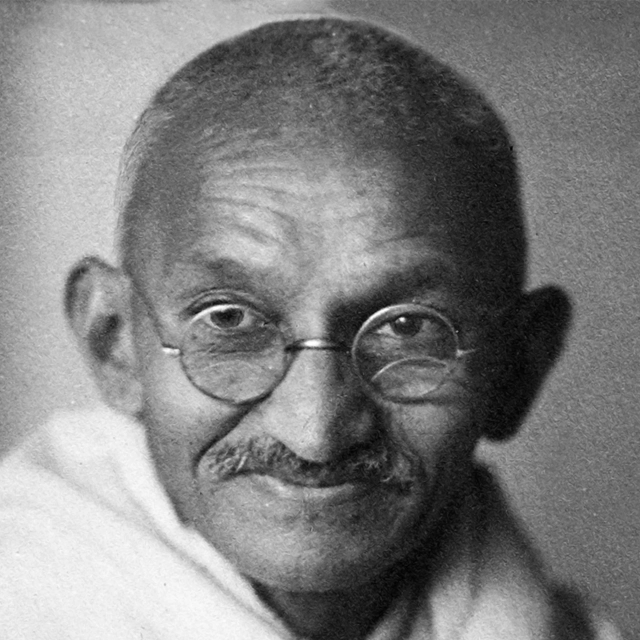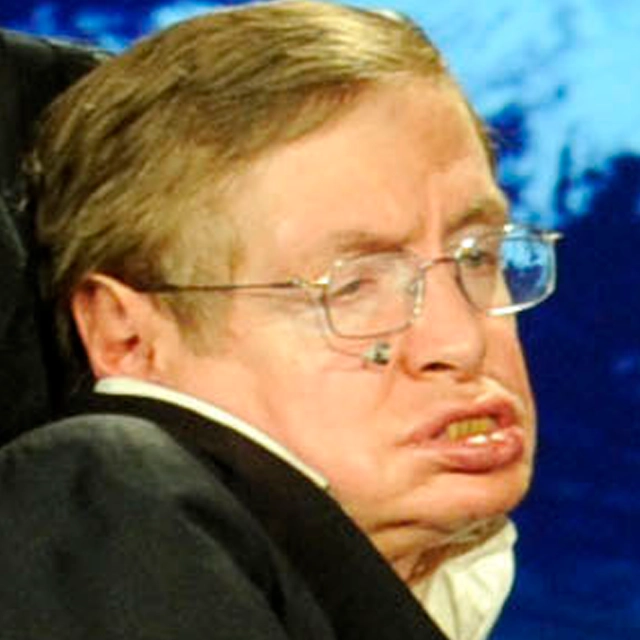Coolidge Audiobook Summary
Amity Shlaes, author of The Forgotten Man, delivers a brilliant and provocative reexamination of America’s thirtieth president, Calvin Coolidge, and the decade of unparalleled growth that the nation enjoyed under his leadership. In this riveting biography, Shlaes traces Coolidge’s improbable rise from a tiny town in New England to a youth so unpopular he was shut out of college fraternities at Amherst College up through Massachusetts politics. After a divisive period of government excess and corruption, Coolidge restored national trust in Washington and achieved what few other peacetime presidents have: He left office with a federal budget smaller than the one he inherited. A man of calm discipline, he lived by example, renting half of a two-family house for his entire political career rather than compromise his political work by taking on debt. Renowned as a throwback, Coolidge was in fact strikingly modern–an advocate of women’s suffrage and a radio pioneer. At once a revision of man and economics, Coolidge gestures to the country we once were and reminds us of qualities we had forgotten and can use today.
Other Top Audiobooks
Coolidge Audiobook Narrator
Terence Aselford is the narrator of Coolidge audiobook that was written by Amity Shlaes
Amity Shlaes is the author of four New York Times bestsellers: The Forgotten Man: A New History of the Great Depression, The Forgotten Man/Graphic, Coolidge, and The Greedy Hand: How Taxes Drive Americans Crazy.
Shlaes chairs the board of the Calvin Coolidge Presidential Foundation and the Manhattan Institute’s Hayek Book Prize, and serves as a scholar at the King’s College. Twitter: @amityshlaes
About the Author(s) of Coolidge
Amity Shlaes is the author of Coolidge
More From the Same
- Author : Amity Shlaes
- Great Society
- The Forgotten Man
- Publisher : HarperAudio
- Abraham
- American Gods [TV Tie-In]
- Dead Ringer
- House of Sand and Fog
- Prey
Coolidge Full Details
| Narrator | Terence Aselford |
| Length | 21 hours 4 minutes |
| Author | Amity Shlaes |
| Category | |
| Publisher | HarperAudio |
| Release date | February 12, 2013 |
| ISBN | 9780062116093 |
Subjects
The publisher of the Coolidge is HarperAudio. includes the following subjects: The BISAC Subject Code is 20th Century, History, United States
Additional info
The publisher of the Coolidge is HarperAudio. The imprint is HarperAudio. It is supplied by HarperAudio. The ISBN-13 is 9780062116093.
Global Availability
This book is only available in the United States.
Goodreads Reviews
Amity
March 17, 2014
This is just a note from the author to say: hope you enjoy COOLIDGE. He was much fun to follow. Please talk to me and CC on the author page on facebook, we do answer emails there. We also have an author page, Amityshlaes.com.A number of book clubs have asked why COOLIDGE might be of interest.Here are several answers: Coolidge's life tells governments and families how to budget, and explores the link. The Coolidges got twin lion cubs and named them Budget Bureau and Tax Reduction. That is all you need to know -- this twinning.Taxes can't be the only solution, a family, and a government, needs to budget as well. Coolidge's life reminds us of the role of faith, and that government can't do what faith can. He believed in Natural Law. "Men do not make laws, they do but discover them." The death of his son Calvin brought him down, but it did not stop CC or Grace, because of their faith......Can a Scrooge be generous? Coolidge was a Scrooge who begat plenty.Thank you!
Adam
February 23, 2013
Is there greatness in inaction? We have a tendency to celebrate leaders - and Presidents - who are doers. In that sense, Amity Shales' "Coolidge" is truly a sequel to her last book, the genuinely excellent "The Forgotten Man." In that book she argued that Franklin Roosevelt - though he remains one of America's most-venerated Presidents - did more harm than good in trying to combat the Depression through his policy of "bold, persistent experimentation", which resulted in wild swings of government policy that often did more harm than good and which created unsettled (and therefore harmful) conditions that persisted until the Second World War restored something like regular order.Coolidge, as he comes across here, is the anti-Roosevelt. Where Roosevelt believed in activity for activity's sake, Coolidge genuinely believed that doing nothing was often the preferable alternative to doing something, especially when the only reason for taking action was to be seen to do something. His speech on taking office as the President of the Massachusetts Senate, published as, "Have Faith in Massachusetts", remains a classic that ought to be required reading in schools all across the world.What Shales really succeeds in doing, however, is making the case for Coolidge as a man. Where history has often depicted him as a cold and lazy man, fundamentally indifferent to suffering, she instead presents a convincing case that he was actually a deeply compassionate and principled man who believed in limited government as a positive good and who led a consistently simple life devoted to public service. Perhaps in this sense we ought to call Coolidge the American Cato - the last simple small-r republican who not only believed in, but also genuinely lived, the first principles of the republic.
Peter
February 25, 2020
I'll never understand why some people rate biographies based on how much they like the person in question, especially when it comes to Presidents. Whether you're a fan of Coolidge or not, this book was incredibly well-written, researched, and shined a light on one of those presidents that you never really hear much about.A bit of a rarity, Coolidge was a President who stuck to his principles and was fiendishly devoted to slashing spending, something we could certainly use now! He was progressive on race relations, and opted not to run for a second term after having served a full term of his own plus the last two of Harding's term following his death (securing a second election would have made Coolidge the longest serving president at the time).
Terry
February 22, 2021
I've read bios on President's Washington, Jefferson, and Jackson. Now I've skipped ahead to Coolidge. I really didn't know much about him, other than he was known as 'Silent Cal'. Coolidge was Governor of Massachusetts, then selected to be the vice presidential running mate of President Harding for the 1920 election. When Harding died of a heart attack while in office, Coolidge became president for the remainder of Harding's term, then ran for an additional term. It was an exciting and trying time to run the country. These were the days of prohibition, but more communities across the country were becoming electrified. Personal ownership of automobiles was spreading. The Hardings and Coolidges rode to the inauguration in matching Packards. This was the first time both the first and second families travelled by car together. Aviation was also starting to gain more influence with it's role in mail delivery, as well as the impact of Lindbergh's crossing of the Atlantic. But Coolidge also had to deal with cutting bloated government spending after the war, shrinking the size of the federal government, and battling public-sector unions. President Coolidge also had to deal with the tragedy of losing his sixteen year-old son Calvin jr. from blood poisoning--resulting from an infected blister while playing tennis at the White House. As I read more history of our federal politics, I shouldn't be surprised at many of the similarities of today's political landscape. Often, some concepts are older than we think. I thought the tenets of progressivism was fairly new, but surprised to see the movement's popularity preceding the 1920 national election. Progressives pushed for reform in cities, but no one seemed to really know what exactly that meant. Pitting Democrats and Republicans against each other was part of the progressive strategy, but the movement became so popular that candidates for the major parties almost seemed to be in a race to adopt the most progressive platform. But by 1921, during Harding's inauguration--the first broadcast with a microphone, the President had determined it was time to give up on progressivism, and go back to more tried and true policies. “No altered system will work a miracle,” he said. “Any wild experiment will only add to the confusion. Our best assurance lies in efficient administration of our proven system.” Progressivism still persisted. At Amherst, the university Coolidge graduated from, drama erupted when the trustees polled faculty over the favorability of long term administrator Alexander Meiklejohn. One trustee, and former teacher, Robert Frost stated "Meiklejohn, had taught the boys to favor thinking instead of learning." But Frost also noted, “by thinking, they meant stocking up with radical ideas, by learning, they meant stocking up with conservative ideas.” Coolidge ran as the Republican candidate for his first full term in 1925. His Democrat opponent John Davis, was also joined by a Progressive candidate Senator Robert La Follette. At the time Davis thought that if the progressives teamed up with the democrats they could undo all of Harding's accomplishments. However La Follette ran as a third party candidate on a platform of expanding government and hoping to take away Republican votes. By the end of the election La Follette had 16.6% of the vote, Davis had only 8.39%, and Coolidge had a whopping 54%.Other historical tidbits I found interesting:At the 1920 National Republican convention Warren Harding was finally selected as the party's presidential candidate and Coolidge his VP. A United Press reporter wrote about the party leaders making their decision 'in the smoke filled room', a phrase still frequently used today--even though those rooms are no longer smoke filled.Warren Harding can be credited for creating the term 'bloviate', or empty, pompous, political speech. Harding was well known for this style of speaking, making him and his VP Coolidge a rather odd couple. Coolidge was not really silent, but often spoke in short sentences, and in a more abbreviated manner. A speech in Kansas City given to a veterans group by Coolidge later that year sounds very similar to something more well known today. “Your glory lies in what you have given and may give to your country not in what your country has or may give to you.” During Coolidge's second term, cutting federal spending was a major priority. Andrew Mellon, Coolidge's Treasury Secretary proposed cutting tax rates by 25% to stimulate more spending, thinking this would not have a detrimental effect on revenue. In fact the decreased revenue was less than 5 percent. Perhaps we need more people that think like Mellon in our government today. Part of the government cost cutting reminds me of the days I worked in municipal government, the 're-inventing' govt. days of the 1990s. One saving Coolidge put into effect was changing the colorful white with blue stripe mail bags, to basic gray canvas. This saved $50,000. Another change--the special red tape that wrapped government documents would be replaced by string. I always wondered where the term govt. red tape came from!Coolidge's VP Charles Dawes was upset at the 'selfish' senators who wanted to sustain the practice of the filibuster. He thought the concept was undemocratic. Here we are today still debating this same practice.Coolidge decided he would not run for re-election after his first full-term. Partly, his political philosophy from his days in Vermont was that one full term should be enough. Also, his health had started to decline. I also think he had an inkling of the coming stock market crash that would lead to the Great Depression. His good friend humorist Will Rogers wrote a parody announcing his own candidacy on behalf of 'The Silent Majority'. Originally this term was used to describe Calvin Coolidge supporters during his campaign for nomination at the 1920 National Republican Convention. Yes, the term 'Silent Majority' has become another re-invention. Some of Coolidge's accomplishments as President: Coolidge appointed not only Harlan Stone to the Supreme Court but seventy-eight other federal judges. Days after Coolidge left office, the Supreme Court upheld the pocket veto, the president’s ability to kill a bill during the congressional recess. The Kellog-Briand pact was passed to promote world peace in the aftermath of World War I. Among other things, after his presidency Coolidge wrote newspaper columns. He was also chosen to help administer part of the fortune of Conrad Hubert who died in 1928. Mr. Hubert invented the flashlight. Coolidge, along with Governor Al Smith, and Julius Rosenwald (a founder of Sears) were appointed to administer the fortune to various charities. The majority of the $4 million went to the Boy Scouts, Girl Scouts, and various hospitals. In April, 1932 FDR gave a speech that resonated with Americans across the nation. Over the radio, he spoke of “the Forgotten Man at the bottom of the economic pyramid,” a little fellow who was not getting by in the downturn. The 'Forgotten Man" has been forgotten longer than we realized, we often still here about him today. Coolidge died of a heart attack in January 1933. One of my favorite quotes of his that still applies today, "Business can stand anything better than uncertainty." If you are interested in Coolidge, or this time in US history I highly recommend Amity Schlaes' book. She had a more difficult time capturing the nuances of Coolidge the man than some previous presidents. Much of Coolidge's personal correspondence was destroyed at his own direction. Despite this, Schlaes does a great job of bringing the accomplishments of Coolidge to light.
Arminius
March 08, 2016
I have always been fascinated with the cabinet members of the presidencies of the 1920’s. They were a group of superstars. President Harding and Coolidge shared Secretary of State Charles Evans Hughes. Hughes was a former Governor and Supreme Court Justice. They also shared Andrew Mellon. Mellon was the banking giant who understood the American economy and the world’s economy. Coolidge’s vice president was Charles Dawes. Dawes served as America’s Controller of Currency which charters, regulates, and supervises national banks and thrift institutions as well as federal branches and agencies of foreign banks in the United States. He was also awarded the Nobel Peace prize for authoring the WWI reparation payments. In addition, he is the author of a song entitled “Melody in A Major” which became a number one hit song in 1958 under the title “It’s All in the Game.” Herbert Hoover who was known as “The Great Engineer” was given the Commerce Secretary Job. Hoover was already a celebrity. During WWI, he organized a relief effort which in just six weeks helped 120,000 American tourists return to the United States. At the conclusion of WWI, he was the head of the American Relief Administration. In this position he organized shipments of food saving millions in central Europe from starvation.Most of these formable public people were picked by President Warren Harding. Harding comes off in this book as someone special. He inherited a dismal economy. He instituted the first part of Treasury Secretary Mellon’s scientific tax cutting plan and the economy recovered. He possessed a great gift of being universally likeable. President Harding also broke the tradition of the vice president not attending cabinet meetings. On to President Calvin Coolidge, Ms. Shales lays out his accomplishments in the very beginning of the book. She then proceeds to lay out Calvin Coolidge’s entire life. Calvin was a classic introvert. He would however focus on making speeches at Amherst College in Massachusetts and proceeded to get a law degree. Afterwards, he led a successful law business. He then campaigned and won a variety of political offices until he managed to obtain the Governorship of Massachusetts, this where he made his name. When Boston Police went on strike chaos ensued in the streets. Violence took hold of Boston. Governor Coolidge responded expeditiously hiring new policeman which immediately quelled the violence. His quick successful decision made him a hero in all the major newspapers. At the 1920 Republican nominating convention Coolidge gained a ground swell of support to be the Republican nominee for President. Warren Harding however had a brilliant manager named Harry Daugherty who garnered support for Harding plus Harding’s likeable magnetism led to his victory and ultimately to the Presidency. Coolidge as one of the most popular nominees at the convention was an easy choice for vice –president. After sitting in on cabinet meetings Coolidge became close with the great team of cabinet members, particularly Andrew Mellon.Harding surprisingly died in 1923. As a result, Coolidge ascended into the presidency.He served as President for sixty seven months from August 1923 to March 1929. Under his watch the federal debt fell, the top income tax rate dropped to 25%, the federal budget was always in surplus and the unemployment rate was a miserly 3 %. Modern conveniences also made their first appearances. Electricity first entered American homes, air flight became popular for the first time, and cars made their way into American lives.In addition, patent grants increased dramatically and KKK membership dropped by millions.Coolidge worked closely with a man named Herbert Lord to cut government spending. He turned down almost all requests for federal program aid including building dams, creating roads and pensions for service members. He also worked with Andrew Mellon to bring down income tax rates.Coolidge remained very popular during most of his presidency. After all, he had a booming economy, the world was at relative peace and the government was gaining surpluses while the public’s taxes were lowered. He commissioned the creation of Mount Rushmore and refused, despite the instance by sculptor Gutzon Borglum, to have his face alongside Washington, Lincoln, Jefferson, and Roosevelt. However, his popularity increased in South Dakota and the rest of the Western United States because of his visit. His popularity waned a little near the end of his presidency. The Mississippi River had over-flowed and caused massive damage to the state of Mississippi and surrounding states in 1927. The affected States asked for Federal aid. Coolidge flatly refused, believing it was a State not Federal issue. Shortly afterward, Coolidge’s home state of Vermont had a massive flood. Again requests for federal aid came in. But once again, President Coolidge remained consistent and turned down the aid request. Coolidge’s final year in office was 1928. 1928 brought a great accomplishment which unfortunately did not withstand the test of time. Coolidge and, his second Secretary of State, Frank Kellogg ushered in the Kellogg-Briand Pact. This treaty was signed by the United States and fifteen other nations. It outlaws war as a means to settle disputes, substituting diplomacy and world opinion for armed conflict. Eventually it was signed by 62 other nations.He interestingly retired into the role of a syndicated newspaper columnist where he would give political analysis and warn his successor, Herbert Hoover, of the danger of his tax and spend policies to the economy. Shortly before he died he warned again that federal spending would not solve, what would become, the Great Depression. He cited how Grover Cleveland’s depression was shortened due to his refusal to spend.
Carl
April 11, 2013
The top-hatted Calvin Coolidge who gazes out at readers from the cover of Amity Shlaes’ engrossing new biography seems different from the caricature of the dry, parsimonious New Englander who is usually passed over on the historian’s way to Herbert Hoover’s crash and FDR’s New Deal. Shlaes wants us to see a determined, even-tempered man: Note the neatly horizontal line of the mouth, balanced by wide-open eyes that seem to bounce with life.In short, there is more to silent Cal — as he was nicknamed in college — if you meet him eye-to-eye.Of course small-government conservatives embrace Coolidge, who left office in 1929 amid a booming economy and with a federal budget smaller than when he became president in 1923, in the wake of scandals that rocked the Harding administration. But you don’t have to be a Republican to admire Coolidge, a man of extraordinary integrity and discipline. Indeed, he appeals to the full range of the political spectrum — at least to those searching for a way to force government to live within its means while fostering prosperity for the population at large.Coolidge’s fiscal principles, Shlaes shows, developed out of hard-won success in the austere “snowbound” world of 19th-century New England, in which a sickly young man worked hard and truly understood the value of a dollar. Even if we cannot return to that world (who would want to?), its driving energy, based on thrift, provides a useful perspective on our more permissive and tolerant times.Today, when the Michigan Legislature has recently voted to establish a right-to-work state, Gov. Coolidge’s stand against the 1919 Boston police strike and his willingness to take on Samuel Gompers and the American Federation of Labor cast his notions of the public good in prominent relief. This biography seeks to turn political discussion back to ideas of self-sufficiency and self-containment, which critics of the New Deal, the Fair Deal and the New Frontier have longed to revive. Whether or not Coolidge’s example can now be emulated, his biographer has provided a vivid example of what success and stability meant in an era when a president subsumed himself in the cares of office and paid scant attention to his public persona.
Sara
March 22, 2021
Didn’t know a whole lot about our 30th President before reading this bio. Coolidge brought a strong respect for order, humility, and succinctness to the presidency. He was an extremely principled man with an abundance of common sense and tactfulness. The concept of “scientific taxation” that he and Andrew Mellon encouraged enabled a maximization of federal revenue with a minimal impact on businesses. (If only we had leaders today who revered such pragmatic actions instead of looking to their own short-sighted personal gains.)
carl
February 19, 2016
With the a 4.1 trillion dollar budget proposed for the US for 2016 and an increasing 19 trillion dollar national debt, “Silent Cal” as President Coolidge was known, must be screaming from his Vermont grave! As the country’s 30th President, Coolidge’s primary goal was to reduce the 3.3 billion dollar budget and the 28 billion dollar national debt, which was mostly incurred by World War I. The difference in the billion-trillion numbers boggles budget conscious mind! Many people could identify a President with an era of the country, Lincoln with the Civil War, FDR with the depression and World War II, JFK with the start of the 1960s, however for personalities of one of the most exciting times, the ‘Roaring Twenties’, perhaps Babe Ruth, Harry Houdini, Charles Lindbergh, Gatsby, Bootleggers, Flappers, Jazz men would come to mind, but not many would name Coolidge. ‘Coolidge’ takes a thorough look at his life; from his Vermont family roots to every political wrangling, from local politics to the White House. This is a big book, so be prepared for a lot of budget details and family insights. While you do get a close look at politics of the times, and the role of the railroads with the entry of autos and airplanes on transportation scene, there isn’t much to make you feel the popular culture of the era, what is going on during the ‘20s from the everyday person point of view, which I think would make it a more fun read, but then again, an even bigger book. As Coolidge was a fan, there are interesting meetings with Charles Lindbergh after his famous flight. Calvin Coolidge was about economy, honesty, individualism, and yes, didn’t talk much, a good man, and this is a good read. This book has 10 pages of photos, a lengthy bibliography but mmm, no index.
David
March 16, 2018
Pleased to have finally completed this lively biography of a tremendously underrated US president. In contrast to most subsequent American leaders popularly associated with "free markets" and "small government", Calvin Coolidge was more than just talk (something of which "Silent Cal" did famously little, anyway).Alongside key allies inside his cabinet, he led a genuine and effective drive for thrift in government and steadfastly resisted the growing clamour for expansion. He successfully enacted tax cuts that led to an increase in government revenue, and he stood firm on his commitment to the separation of powers between state and federal government, even in the face of natural calamities.For a classical liberal like myself, it's difficult not to cheer Coolidge on as the book progresses through his remarkable life and political career, but it's also a bittersweet read. Much of his hard-fought achievements were promptly undone, first by his "activist" Republican successor, Herbert Hoover, and then by the catastrophic New Deal of Franklin Roosevelt. It's also a pipe dream to imagine anyone of Coolidge's humble disposition rising to national politics in today's era, certainly not in the United States, or perhaps anywhere.Setting aside such pessimism however, the successes of Coolidge's tenure are firmly established in these pages and offer tremendous lessons for how limited government once did work, and can again in future. A remarkable book about a throughly decent politician and man.
Bob
June 19, 2017
Summary: An account of Coolidge as a man of quiet conviction who presided over a great American transformation.Calvin Coolidge was always one of those presidents who was a name on the list of presidents who otherwise seemed unmemorable. Especially in a time of a president who dominates the news coverage, Coolidge might come as a pleasant breath of fresh air--someone who cared more for deeds than words, and sometimes influenced more by what he did not do. Perhaps he is not better known simply because he was a president between the wars, during the great economic expansion known as "the roaring Twenties."Amity Shlaes gives us a presidential biography of Coolidge that certainly raised him in my estimation while reminding me of the limitations and challenges every president faces. Shlaes begins with describing the Coolidge family tree--those that left Vermont for better land, and those who stayed to eke out a life on its rocky soil, a lineage tracing back to the early colonists, peopled by both farmers and politicians. We trace his education at Black River and St Johnsbury Academies and then on to Amherst, where this quiet young man excels in debate. He establishes a law practice, winning clients attracted to his quiet efficiency that cost them less, kept them out of court, earning him less but building a clientele.He married Grace, who had spied him through a window while shaving. She was a teacher at the Clark School of the Deaf, which Coolidge in his later years raised $2 million to endow, and created a cause to which Grace gave himself after his death. Shlaes traces his political career from city and state legislator positions to his governorship of Massachusetts during which he takes a strong stand against the Boston Police strike that brings him to national attention, and eventually to nomination as Vice President on the Harding ticket, with the indignities of that office, disrespected by Cabot Lodge from his own state.Then Harding dies, and Coolidge finds himself in the White House. The bulk of the book traces that presidency. He begins with a restoration of integrity after the crony politics of Harding. He gathers people like Andrew Mellon and Charles Evans Hughes around him. He consistently balances budgets, cuts taxes and expenditures, and increases revenues and surpluses. He wins election in his own right, probably saying less than any other presidential candidate. Often, he presided through the veto and even pioneered the pocket veto, which was upheld in court. He also presided over an incredible economic boom, highway construction, the Lindbergh flight. He resists veterans bonuses which he believed the states should pay. When floods ravage Vermont, he resists flood control legislation because of how it would bloat federal budgets, which he was able to hold to a mere $3 billion per year.Shlaes makes us aware of how tough the presidency is on the occupants of the office. It broke the health of Wilson, Harding died, and Coolidge also was broken in health by the office, dying within four years. He suffered the loss of a son, Calvin, during his tenure. His marriage was strained. His last years provided a measure of restoration, even though his relationship with Hoover was always tense.Coolidge, like some others, served to restore the dignity of the office when his predecessor had jeopardized the stature of the office. That is a particular kind of greatness, not the greatness of a war president, but nevertheless important to the republic. Shlaes helps us appreciate the important role men like Coolidge have played in our history.
Jeff
February 23, 2013
One of my favorite economic history books is The Forgotten Man by Amity Shlaes. A take on the Great Depression that you rarely see from mainstream writers, it did a great job cutting to the chase regarding Depression-era economics. When I saw that Shlaes was doing a biography on Calvin Coolidge, all the better!First, this is very much a political biography. While there's plenty about his family and his life before politics, it's all framed within the context of his politics and political career. With that in mind, it's a biography that really could only happen in today's political and economic climate, with the record amounts of government debt and with Keynes all the rage. Coolidge, with his tax and budget cutting ways, is an easier sell to an audience as a result.The book itself is solid. It's highly detailed, with copious notes, and is informative without being dry. For a 450+ page book, the narrative is also very tight, and, at least when it comes to the political history, I didn't feel like I was missing a lot. The downside is that, without a strong focus also at the non-political Coolidge, Coolidge does come across as a little more eccentric than he may have been. For all I know, he may have been a strange man on a whole, but strange people generally don't get elected to the presidency.If there is a downside, it's that the book is clearly looking to build the case for Coolidge based on his actions. We get very little negative information about Coolidge that might help round out his presidency, and it makes things somewhat lacking as a result in that area. It's not a fatal flaw, but given the overall lack of knowledge people may have of Coolidge, this may not be the fairest introduction for many. On the other hand, this is not an introductory tome, so there's that to consider.Overall, however, a great book with a lot going for it, and a strong take on a president who, at best, is largely forgotten and at worst unfairly maligned for issues he didn't cause. Worth reading for anyone interested in the political aspects of the 1920s and the aftermath of them.
John
May 03, 2013
An afternoon ride in a rumble seat roadster. Don your straw boater hat, your "Keep Cool With Coolidge" button, and enjoy this slice of life, Americana style. While it helps to be a history buff, that is not a pre-req for enjoying this deeply researched, well crafted work. Calvin Coolidge was a smart, loyal, hard working, scandal free, loving man from that Green Mountain state, Vermont. He meets challenges at Amherst College, finds his niche as a detail minded lawyer, enters public life and succeeds. Grace Goodhue Coolidge is a loving, detail minded woman also sharing Vermont virtues of rugged independence, can-do spirit and hawk-eyed thrift. Their synergy drives them to serve their new state of Massachusetts as governor. Everything they touch resonates like gold with a people tired of The Great War of 1914-1918, tired of foreign entanglements. People like the cut of their jib. Quickly rising to vice-president, and then, launched into the White House after the death of President Harding, they handily apply those New England virtues, winning the hearts of a Roaring '20s jazzy America. The administration and lives of President and First Lady Coolidge, two great patriots, make for good reading with this stirring saga.
Bill
May 23, 2013
Outstanding biography of a POTUS who is poorly understood and no longer taught in our schools. He would be aghast to see the out of control behemoth that our federal gov't has become!"Nothing in this world can take the place of persistence. Talent will not; nothing is more common than unsuccessful men with talent. Genius will not; unrewarded genius is almost a proverb. Education will not; the world is full of educated derelicts. Persistence and determination are omnipotent." C. Coolidge
Nathan
October 30, 2021
Amity Shlaes has done a great service to the United States of America with her biography on Calvin Coolidge.We often know much more about the history of war than the history of peace. And we often read more of leaders who try to make a name for themselves rather than leaders who strive to serve.By today's standards, it's hard to believe a president like Coolidge could have existed. Consider just these few facts:-He was very much an introvert.-He balanced the federal government.-He cut taxes and reduced federal government expenditures.-While doing this, he oversaw one of the greatest periods of development and peace in American history. There are parts of Coolidge that remind me of our first president.I read this Coolidge biography after reading Ron Chernow's biography on George Washington. In it, Chernow writes about Washington: "In surrendering the presidency after two terms and overseeing a smooth transition of power, Washington had demonstrated that the president was merely the servant of the people.”Fast forward to the late 1920's, and Coolidge does something similar. Despite his popularity, he declines to run again in 1928. He merely gathers the press, and succintly announces: "I do not choose to run for president in 1928." That's all. The press and Republicans are stunned. Republicans keep pressing him to run, but he doesn't relent on his decision to resign. Shlaes indicates that the reason may have been in part due to his health, but she also notes that he realized that power corrupts. Coolidge also reminds of Washington because both knew how to use silence to their advantage. Chernow wrote that Washington often made his point by what he didn't say when confronting subordinates. Coolidge just seemed naturally quiet. Throughout Coolidge's presidency, he is relentless in cutting taxes and reducing the debt. He is consistent in his belief that certain matters should be relegated to the states and the federal government should stay out of it.Sadly, his financial successes are short lived. The next president is Herbert Hoover, who seems to align more with the "Progressive" wing of the party. Hoover chooses to spend much more liberally, but as Coolidge predicts, Democrats will outspend him. We all know the story after that: Franklin Delano Roosevelt follows Hoover, implements the New Deal, and spends like crazy. FDR's New Deal policies don't end the Great Depression. If anything, the Great Depression is prolonged and keeps going on and on. And yet, somehow FDR is somehow recognized as a great hero, while Coolidge is mainly forgotten.Shlaes notes early on that some historians blame Coolidge for the Great Depression, although economists don't really blame him. It seems a bit odd to give credit for FDR for solving the Great Depression when he really didn't solve it while blaming Coolidge for the Great Depression when Coolidge actually presided over a time of great peace and prosperity. But that's why historians like Shlaes are important.Since this is supposed to be a book review, I suppose I do have to reluctantly give some minor criticisms. There are times in which the content seems to jumble a bit, such as times in which Coolidge's personal matters and then work matters are quickly meshed together. Or other times it seems a flow of thoughts is headed in one direction only to change course quickly. I think it would have been more helpful to have shorter chapters. But I could give this type of criticism to giants such as Chernow or David McCullough. Nonetheless, Shlaes has a tall order. She has to write about a president who had no desire to come across as exciting or flashy. She chose to write about a peaceful time in our history, and keep in mind that Coolidge's biggest legacy is his budget successes. And budgets are not always seen as exciting.Now, this is not to say the book is boring. Far from it. In today's day and age, it is actually extremely interesting. The fact that we had a president who reduced the budget and who willingly gave up his power despite being a very popular president seems foreign to us today. (Coolidge won 54% of the vote in the 1924 election, even though the Progressive Party has splintered off from the Republican Party. Keep in mind: the Progressives were largely Republicans. Teddy Roosevelt, a prominent "Progressive" had been a Republican.)Coolidge should be a much bigger part of our history books. But the fact that he is not an exciting figure is perhaps the reason we should pay attention to him. Some of the greatest statesmen are the ones who never seek the spotlight. Another interesting part of the book is the way the Republican Party looked back in the 1920s. Today there are those who say that the Democrat Party and the Republican Party have switched places. That's a bit of an odd belief, but it is commonly stated today. The reason behind this incorrect belief is because back then the South was largely Democratic and had been since the Civil War, whereas the North was largely Republican. People who believe this seem to ignore other realities, such as the fact that the large swath in the central part of the country from North Dakota down to Kansas has been predominantly Republican during this entire time. But the Republican Party's core beliefs have remained similar. In the 1920 election, Shlaes writes that the GOP had shifted away from the progressive beliefs and was now more the "party of low taxes, tariffs, less central government, and stability." Over the next several decades, the GOP would become known for wanting less central government and favoring lower taxes compared to the Democrats. (The Republican Party has shifted a few times on the matter of tariffs, and has just recently shifted a bit more toward liking tariffs than they did 20 years ago.)Coolidge has originally identified as more of a Progressive earlier in his political career, as that was a big topic for Republicans at the time. But after a while, he started to have a turning point in his career, as Coolidge sees the true nature of people on strike. He realizes that activism (despite its purposes) doesn’t create wealth.Coolidge wrote his stepmother: "The leaders there are socialists and anarchists, and they do not want anybody to work for wages. The trouble is not about the amount of wages; it is a small attempt to destroy all authority, whether of any church or government."Coolidge seemed to be thinking along the same lines of President Taft, who was "tiring of the progressive onslaught," Shlaes writes. Taft said: "Votes are not bread, constitutional amendments are not work, referendums do not pay rent or furnish houses, recalls do not furnish clothing, initiatives do not supply employment or relieve inequalities of condition or of opportunity."(Teddy) Roosevelt might favor redistribution, but he, Taft, did not not. Taft considered himself a conservative, and Republicans nominated him. Coolidge would follow in the more conservative school of thought as he developed his career.Not once did I read about Coolidge being called a racist for favoring states rights. Actually, it was the Democrat Party that was trying to decide what to do with the Ku Klux Klan in the 1924 Democrat Convention, with two factions arguing over whether to separate themselves from it. Coolidge favored states' rights, limited government, and believes in reducing his own power. Following him, conservatives would spend about half a century in the wilderness, until Ronald Reagan came along. Here is a brief timeline, albeit a bit simplistic:Coolidge: conservative RepublicanHoover: moderate RepublicanFranklin Delano Roosevelt: DemocratHarry Truman: DemocratDwight Eisenhower: moderate Republican(Somewhere along this time we have the emergence of conservative William Buckley, Jr., National Review, and Barry Goldwater. The conservative wing on the party that believes in social values, limited government, and anti-communism start to overtake the party and the more moderate Rockefeller Republicans.)John F. Kennedy: DemocratLyndon Johnson: DemocratRichard Nixon: moderate RepublicanJimmy Carter: DemocratRonald Reagan: conservative RepublicanShlaes points out that Coolidge did something that Reagan didn't come close to doing: reducing the size of the federal government. Reagan did draw inspiration from Coolidge, though. And Reagan's firing of the air traffic controllers in 1981 has some striking similarities to when Coolidge, as governor of Massachusetts, fired Boston police officers for striking. "There is no right to strike against the public safety by anybody, anywhere, any time," Coolidge said at the time in 1919. It's interesting to see how history can repeat itself. And it's also interesting to see how some things change but other things don't change.
Alicia
September 05, 2020
Great biography of President Calvin Coolidge. I learned all I ever wanted to know about this man (and much more). He is quite a hero, who fought for fiscal responsibility in government and never gave up trying to keep us out of debt. In this current age (in which cities run by Democrats allow Biden voters to riot and loot and burn buildings), I found it interesting how Governor Coolidge handled a riot by striking police officers in Boston (he fired them all and moblized the State Guard). Coolidge didn’t discriminate by race (in contrast to FDR the racist who didn’t allow black reporters into his press conferences). This is a great book, about a great man.
Tony
July 21, 2021
This is a generally good biography of President Coolidge. It shed some light on a leader we don't hear much about. We learn of Coolidge's single-minded devotion to government economy which he championed throughout his career. There are some interesting and humorous anecdotes that warm the character of the man. My overriding impression of the book is that the author was rushed to write it. Very little attention is paid to crucial historical events, and then, only cursorily. If you're a student of history, especially 20th century American history, you might find this a worthwhile read.
Larry
November 02, 2019
I found this to be an unexpectedly enjoyable audible book. I did not know very much about Calvin Coolidge who was president during the 1920s. He was a Republican who believed in small government and cutting taxes. The book is written with a slant that makes that approach sound like the most obvious approach in the world and totally absent of politics. Just good economics it would have us believe.The book portrays Mr. Coolidge as a very decent man. There were no suggestions of impropriety’s although he was vice president during the teapot dome scandal. It is suggested he knew nothing about it! And at the very end of the book there is the revelation that he destroyed a reasonable number of documents. But there is no suggestion that that was with any ill intent other than maybe to protect privacy.I think the book does a good job both telling about the man and the time he inhabited. It is quite a different time from that we find 100 years later. His family comes from Vermont but he spent a significant part of his life in NorthHampton Massachusetts. Because I followed along with a Kindle book along with the Audible, I was able to copy out a good many paragraphs that I found interesting. The author is good enough that I was able to read about this man who had the politics that I probably would not like and yet very much enjoy listening to the book and his story.President Coolidge was evidently one of the first presidents who use the pocket veto whereby he failed to sign legislation over long congressional resources which resulted in the negation of the legislation. This practice was validated by the supreme court during his tenure.Coolidge left the presidency just before the 1929 stock market crash. Hoover succeeded him as president and the book covers his reactions to those events.
Most Popular Audiobooks
Frequently asked questions
Listening to audiobooks not only easy, it is also very convenient. You can listen to audiobooks on almost every device. From your laptop to your smart phone or even a smart speaker like Apple HomePod or even Alexa. Here’s how you can get started listening to audiobooks.
- 1. Download your favorite audiobook app such as Speechify.
- 2. Sign up for an account.
- 3. Browse the library for the best audiobooks and select the first one for free
- 4. Download the audiobook file to your device
- 5. Open the Speechify audiobook app and select the audiobook you want to listen to.
- 6. Adjust the playback speed and other settings to your preference.
- 7. Press play and enjoy!
While you can listen to the bestsellers on almost any device, and preferences may vary, generally smart phones are offer the most convenience factor. You could be working out, grocery shopping, or even watching your dog in the dog park on a Saturday morning.
However, most audiobook apps work across multiple devices so you can pick up that riveting new Stephen King book you started at the dog park, back on your laptop when you get back home.
Speechify is one of the best apps for audiobooks. The pricing structure is the most competitive in the market and the app is easy to use. It features the best sellers and award winning authors. Listen to your favorite books or discover new ones and listen to real voice actors read to you. Getting started is easy, the first book is free.
Research showcasing the brain health benefits of reading on a regular basis is wide-ranging and undeniable. However, research comparing the benefits of reading vs listening is much more sparse. According to professor of psychology and author Dr. Kristen Willeumier, though, there is good reason to believe that the reading experience provided by audiobooks offers many of the same brain benefits as reading a physical book.
Audiobooks are recordings of books that are read aloud by a professional voice actor. The recordings are typically available for purchase and download in digital formats such as MP3, WMA, or AAC. They can also be streamed from online services like Speechify, Audible, AppleBooks, or Spotify.
You simply download the app onto your smart phone, create your account, and in Speechify, you can choose your first book, from our vast library of best-sellers and classics, to read for free.
Audiobooks, like real books can add up over time. Here’s where you can listen to audiobooks for free. Speechify let’s you read your first best seller for free. Apart from that, we have a vast selection of free audiobooks that you can enjoy. Get the same rich experience no matter if the book was free or not.
It depends. Yes, there are free audiobooks and paid audiobooks. Speechify offers a blend of both!
It varies. The easiest way depends on a few things. The app and service you use, which device, and platform. Speechify is the easiest way to listen to audiobooks. Downloading the app is quick. It is not a large app and does not eat up space on your iPhone or Android device.
Listening to audiobooks on your smart phone, with Speechify, is the easiest way to listen to audiobooks.

